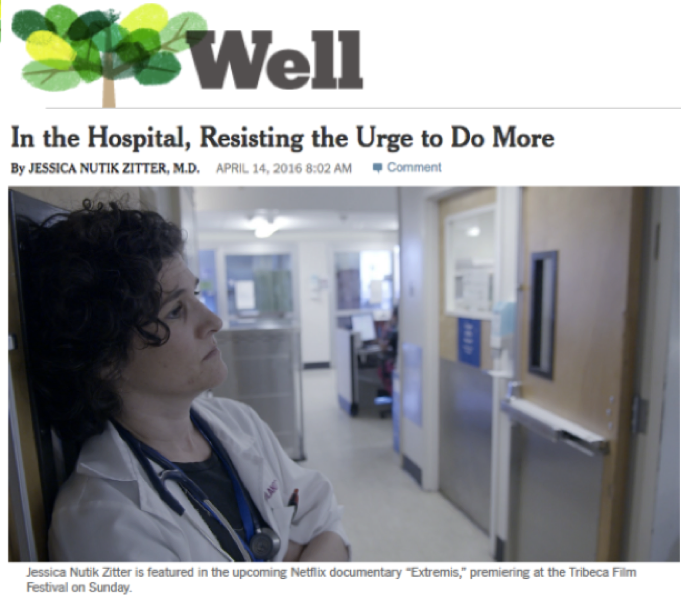 We’ve often written here about palliative care and end of life. (The two are not the same: you can have palliative care without having decided the end is near.) They’re, in a sense, the ultimate expression of patient-centered care, forcing the question: who gets to say what’s the right thing to do?
We’ve often written here about palliative care and end of life. (The two are not the same: you can have palliative care without having decided the end is near.) They’re, in a sense, the ultimate expression of patient-centered care, forcing the question: who gets to say what’s the right thing to do?
One of SPM’s newest members is Dr. Jessica Zitter (@JessicaZitter), author (right) of a post last week on the New York Times “Well” blog, with a recent story of a patient who was clearly dying. It ends:
I believe we did right by our patient. We acknowledged that we couldn’t save her, and resisted the urge to treat her untreatable disease — and instead treated her suffering.
The photo shows Dr. Zitter in a short new documentary on the subject produced by Netflix, “Extremis,” that’s being featured at Robert DeNiro’s Tribeca film festival, underway now.






Thanks for this ‘alert’. I am such a fan of Dr Zitter @JessicaZitter and look forward to watching on Netflix. Being immersed (as a layperson) in this tricky, emotional topic of end-of-life nuances and decisions, I was so pleased to learn of a decision tool for high-risk surgeries that helps paint a best-case-worst-case-likely-case picture for patients and families. http://www.bestendings.com/dying-in-the-operating-room-rarely-happens/ And, what with physician assisted dying legal in Canada (as of June 6) I’ve been attending every workshop, consultation, town hall I can, resulting in this ‘aha!’ Medical school needs to evolve its perception of ‘harms’ to reflect harms caused by life-prolonging interventions. https://www.linkedin.com/pulse/article/implementation-physician-assisted-death-pad-kathy-kastner/edit